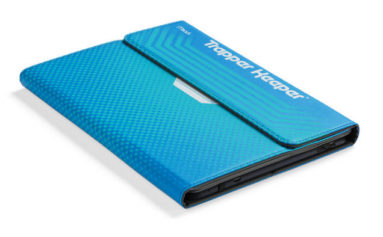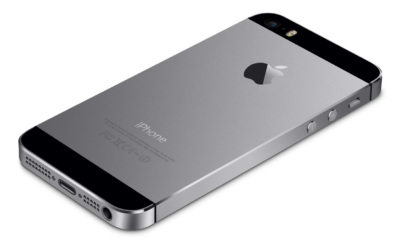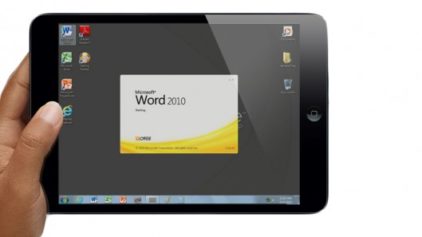Most tablets in use today are iPad sized. That’s because most tablets in use are iPads.
This reality has led pundits to believe that iPad size is the right size for a touch tablet. But I’ve come to believe that in just two years, iPad-sized tablets will represent a small minority of the market.
It’s hard to believe now, but experts used to argue about whether there was room in the space between a phone and a laptop for any kind of consumer electronics device.
Now it has become clear that there are major markets for two sizes: An iPad size in the 10-inch diagonal range, and a smaller size in the 7-inch diagonal range.
Not only should these two form factors be considered distinct, but in many ways they should be considered opposites. The big one is portable (home, office, coffee shop) and the other is mobile (absolutely everywhere).
Why Little Tablets Will Rule the Consumer Market
The key attribute of small tablets that will drive them into mainstream use is low cost. But the implications of why that will prove to be the case are underappreciated as a driver of massive adoption.
How low will they go? I think that over the next two years, the “sweet spot” range for 7-inch tablets is between $100 and $200.
Sure, we’ve seen lots of phones at these prices and below. But phones require wireless service, which brings the total cost of ownership into the many hundreds or thousands of dollars for the life of the device.
With small tablets, consumers will pay one very low price — and they’re done spending.
Wi-Fi is becoming far more ubiquitous now because people are using personal hotspots — features that let several Wi-Fi connections piggyback onto a mobile broadband connection.
Buying these cheap tablets will be a nearly consequence-free decision. They’ll be an impulse buy. People will buy several. People will buy them for their children. Children will buy them for themselves.
But the real driver isn’t just that low cost means more people can afford them. Low cost means low material value, which will give people incentives to use tablets everywhere, all the time without thinking about them. They’re a low-risk gadget to carry around. They’re less likely to be stolen. They’re easily replaced if lost or broken.
The smaller form factor also increases the locations and circumstances for using a tablet. It’s both less conspicuous and also fits in a pocket.
For example, I wouldn’t use my $500 iPad in the following circumstances, but would definitely use my $200 Google Nexus 7: The beach, in restaurants, at the movies (oh, calm down — I’ll shut it off before the trailers roll), while hiking, while walking around in disreputable neighborhoods, while on a boat, and so on.
Increased locations for use means more use, and more use means more enjoyment. Cheapness is a feature. Cheapness enhances mobility.
Because they’re more mobile, they’ll be enjoyed for more casual uses. The Google Nexus 7, for example, is a great example of the kinds of uses people will gravitate toward on small tablets.
The new Google Now and the newly improved Google Voice Search, both new to the Jelly Bean version of Android and first launched on the Nexus 7, suggest the killer app for small tablets: the virtual assistant. They’re both so fast, accurate and uncannily insightful that people will want to to use them all day, every day.
Eventually, I believe, virtual assistants on both iOS and Android tablets will be given the power to control apps on the device. That combination will transform small tablets and phones into Star Trek computers that answer questions and go off and do things in the world on behalf of the user.
Small tablets are also perfect social networking machines. Phones are popular devices for interacting on Facebook, but not because it’s a compelling size. Phones are way to small for the visual, photo-centric way people do social networking. iPad sized tablets are also flawed, because they’re less mobile. But 7-inch touch tablets are an ideal combination of big screen and mobility. Google’s new Google+ app on Nexus 7 is by far the best social networking platform ever introduced. Facebook and Twitter will probably follow with similarly great tablet-specific apps.
So while the larger iPad-size tablets are slightly more usable from a user interface perspective, smaller tablets are vastly more usable from a location and circumstance perspective.
And unlike bigger tablets, which gravitate toward web surfing, reading and email, smaller tablets will be used for more personal uses — as virtual assistants and social networking machines
Why Small Tablets Will Rule the Education Market
The education market, especially K-12, is overdue for a tablet revolution. Few people outside the education market realize that cost is the only thing holding back that revolution.
The least well-funded districts aren’t going to pay iPad prices to supply each student with an iPad.
Even the richest school districts aren’t going to send children out the front door of the school with a desirable, stealable consumer electronics device like the iPad where they might be targets of theft.
This is the one point most people don’t even consider when they think about replacing textbooks with tablets: the physical safety of the children. But educators are obsessed by it, and won’t embrace devices that put kids in danger.
Apple wants to dominate the future of publishing, which is the interactive multimedia ebook market. The key to capturing that market is the education publishing market. Apple wants to use its free iBooks Author product to get everyone making educational materials. They want to inculcate a generation of future authors in the Apple way of publishing.
But that’s not going to happen unless K-12 is using iPads. And that’s not going to happen with a $500 iPad.
The smaller, cheaper iPad is Apple’s key to dominating the future of publishing, and that’s why I believe recent speculation that Apple will unveil a small tablet later this year.
Big tablets like the current iPad will be popular. But they’ll always be the high-end minority. The future belongs to small tablets like the Nexus 7 and the upcoming mini iPad.
Source: PC World


